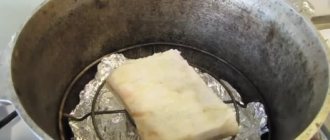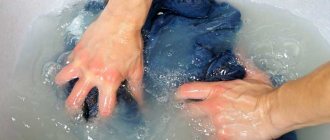Hoarse voice: what to do and how to quickly restore it?
Hoarseness of the voice is characterized by its change to a duller, rougher and lower voice.
It is an external sign of many diseases.
Due to the influence of pathogenic causes, the vocal cords change their shape and function, they become long, thickened and uneven.
The more irregularities in the ligaments, the correspondingly more hoarseness in the voice.
In medicine, the condition of a hoarse voice is identified as one of the types of dysphonia.
If the factors that influenced its occurrence are not identified in time, hoarseness will intensify until temporary loss of voice.
- Causes of hoarse voice
- Symptoms of a hoarse voice
- Diagnosis of hoarse voice
- Hoarse voice in infants
- Treatment for hoarse voice
- Treatment of pregnant women for hoarse voice
- Prevention of hoarse voice
Causes of hoarse voice
Factors influencing the occurrence of a hoarse voice directly indicate existing pathological processes in the vocal cords or closure of the vocal laryngeal lumen.
In turn, these manifestations can be caused by several reasons:
- Diseases of an inflammatory and bacterial nature. Laryngitis, flu, tonsillitis are accompanied by high fever, pain in the throat, soreness and itching. Diseases caused by candida and pneumonia are manifested by a dry cough and fever;
- Toxic effect. Most often, chemical damage occurs due to exposure to ammonia and chlorine. Damage to the respiratory system can occur when cleaning products containing these components are used at home. Signs appear: dry cough, spasms and swelling of the airways. They are characteristic of chlorine intoxication. If the poisoning is associated with ammonia, chest pain, wet cough with mucus, and throat irritation will immediately follow. Fluoride vapor will cause lacrimation, cough and runny nose;
- Allergic manifestations. Hoarseness occurs within a short period of time after exposure to an allergen. Swelling of the larynx occurs, which, in turn, leads to difficulty breathing and suffocation. Accompanied by cyanosis of the skin;
- Endocrine diseases. Changes in the functioning of the thyroid gland provoke the appearance of neoplasms and tissue swelling. Particularly noticeable is pale and dry skin, lethargy;
- Excessive ligament tension. Regular impact on the vocal cords due to professional activities. The professions of announcers, lecturers are all those who need to talk a lot;
- Bad habits. Hoarseness in the voice appears from the irritating influence of nicotine and tar, which contributes to swelling of the throat. Alcohol causes coarsening of the ligaments and, as a consequence, the appearance of hoarseness;
- Chemical burn. Damage to the mucous tissue in the throat occurs due to exposure to acetic acid and ethyl alcohol;
- Heartburn. This disease can cause hoarseness in the voice. With heartburn, gastric juice refluxes into the larynx, where damage to the mucous membrane occurs, similar to a chemical burn;
- Formations of malignant and benign nature. As the tumor increases in size, the capillaries are compressed and the structure of the ligaments changes. Benign tumors are most often diagnosed in men; hoarseness appears in the voice, accompanied by a cough. As they increase in size, they cause suffocation and complete loss of voice. Malignant tumors contribute to persistent hoarseness, with no signs of improvement. As the tumor grows, pain increases, and over time, the voice finally disappears;
- Ligament injuries. They occur during surgical interventions on the thyroid gland. This damages the recurrent nerve. The resulting hoarseness remains for life.
Prevention and general approach to treatment
voice restoration (in addition to drug treatment) :
- During therapy, avoid eating spicy, too hot and cold foods (meals should be warm).
- Talk as little as possible (so as not to overstrain the ligaments).
- Give up bad habits (especially smoking).
- Eat right (minimum fatty and sweet foods, more fresh vegetables and fruits) and drink vitamin complexes.
- Do not enter into conflicts and ensure as calm an environment as possible.
- Eliminate possible drafts in the room and dress warmly in case of a cold.
You should know! As a preventative measure, experts advise:
- Do not smoke or eat too hot or cold food (including drinks).
- Minimize spicy dishes with the addition of pepper.
- Dress according to the weather.
- Avoid stressful situations.
- Talk calmly, without raising your voice to your interlocutor.
- Provide warmth and comfort in the room.
- Minimize communication during epidemics.
- Use a humidifier (at home, at work, etc.).
- If you notice suspicious symptoms (dry throat and constant thirst, periodic dry cough, hoarseness, etc.), you should consult a doctor.
Diagnosis of hoarse voice
To establish the reasons that influenced the change in voice, the following research methods are used:
- Laryngoscopy – allows you to examine the internal structure of the throat and identify damaged areas;
- CT scan. It allows you to diagnose a tumor that is compressing the vocal cords. This study is not conducted for pregnant women and children;
- Ultrasound – used when there is a suspicion of large formations that put pressure on the larynx.
What is hoarseness?
When hoarseness occurs, the vocal cords are unable to function fully. The patient's speech resembles hissing, hissing or whistling. A person feels soreness, scratching in the throat, and has a sensation of a foreign body. Trying to make a sound, the patient overstrains the vocal cords. This often causes them to spasm, further aggravating the condition. Options:
- The ligaments remain in a closed position for a long time, and hoarseness develops.
- If the voice partially disappears, turning into a whisper, then this phenomenon is called dysphonia.
- When there is a complete loss of the ability to make sounds, they speak of aphonia.
Hoarse voice in a child
Hoarseness in infants, in general, is caused by the same reasons as in adults, but there are still signs characteristic only of this age:
- Scream. Ligaments overloaded due to prolonged screaming and tiny bubbles formed in the tissues contribute to hoarseness;
- Throat cyst. At the initial stage of development, neoplasms do not cause clinical manifestations, but as they grow, changes occur in vocal function, manifested by hoarseness and difficulty breathing;
- Foreign objects.
- Dysphonia is functional. If no anatomical abnormalities are detected, then functional dysphonia is assumed, which is determined by the inability to use the vocal apparatus.
If hoarseness suddenly appears, you should suspect that the child has:
- Reduction of the lumen of the larynx, which occurs against the background of Quincke's edema;
- Stenosing laryngotracheitis. The influence of the virus causes an accelerated appearance of swelling of the larynx, so breathing problems appear in a short time. Exacerbation occurs during night sleep. Additionally, a hoarse cough, noisy breathing, and pale skin are observed.
If the child's voice has changed due to screaming, then treatment consists of frequent breastfeeding.
When crying loudly, it is necessary to calm the baby quickly to prevent overstrain of the vocal cords.
Treatment with medications is prescribed after consultation with a therapist.
How to restore your voice after a cold using folk remedies?
There are many methods of treatment at home: gargling, inhalation procedures, lubricating the tonsils and back wall, warm drinks, and drinking medicinal infusions. So, how to restore your voice during a cold using traditional medicine recipes?
- Before going to bed, take a warm foot bath. Take a fresh egg and eat it raw, then eat 1 tbsp. l. honey The procedure must be performed three times with an interval of 40 minutes.
- Peel the horseradish root, grate it and pour boiling water over it. For 10 g of mixture - 0.5 tbsp of water. The infusion will be ready in 4 hours. If desired, you can add a little granulated sugar. Drink warm in small sips throughout the day.
- Crush the blueberries and pour boiling but slightly cooled water. Gargle with this fruit drink 4-5 times a day.
- Beat the egg white until foam appears. Then pour a glass of warm boiled water. Rinse every 2 hours.
- Pour 400 g of bran into 1.5 liters of boiling water, sweeten with brown sugar. Strain and drink in small sips throughout the day.
- Inhalations with chamomile, calendula, eucalyptus, sage. 1 tbsp. l. the herbs are poured with a liter of boiling water. Cover with a blanket and breathe for 10 minutes. You can also do the procedure using a nebulizer. If you have lost your voice due to a cold and need to simultaneously treat bronchitis or tonsillitis, this device will be a real salvation. People who often suffer from respiratory diseases simply must have it at home.
- Aromatherapy with essential oils of lemon, eucalyptus, anise. A few drops of oil and water are added to a special lamp. The procedure should be carried out in a harmonious environment.
- They knew what to do if the voice disappeared due to a cold in ancient times: warm milk with honey and butter has been used for throat diseases since ancient times. If you have partial aphonia, this remedy can help even overnight, and tomorrow you will be able to speak. Milk warms the ligaments, and honey and oil envelop and restore the elasticity of the mucous membranes. You can add a little ginger or cocoa to the drink.
- Crush the fig fruits. Pour in warm milk, heat, but do not bring to a boil. Use three times a day.
- Warm compresses at night also help. Place the cabbage leaf in hot water, dry and brush with honey. Place it on your neck and secure it with a wool scarf or scarf.
- Beat the chicken egg, add a spoonful of honey, a little cognac or rum, lemon juice. All ingredients must be in equal proportions. To stir thoroughly. Heat in a water bath and drink 0.25-0.5 glasses three times a day.
- Prepare a decoction of anise seeds. They need to be poured with boiling water in a ratio of 1:2 and simmered over low heat for 15 minutes. Cool, add a dessert spoon of cognac and 1.5 tbsp. l. honey, mix. Drink 1 tablespoon every 30 minutes. The composition cannot be stored in the refrigerator.
Treatment for hoarse voice
How to restore a hoarse voice
In carrying out therapeutic measures, it is important to reliably establish the factors that caused hoarseness, since the treatment regimen depends on them.
But the basic rule for any etiology is silence.
The gentle vocal load depends on the form of the disease.
If hoarseness is caused by pathologies of an inflammatory and infectious nature, then therapy includes:
- Disease caused by a virus – antiviral drugs;
- Bacterial form – antibiotics;
- Fungal nature – antifungal drugs.
In addition to the above therapy, you will need treatment with antihistamines that reduce laryngeal edema.
Antiseptics are used locally to wash away pathogenic microflora.
If the cause of hoarseness is allergic, the source of the allergen is excluded and antihistamines are used.
In case of a severe allergic reaction, glucocorticosteroids are indicated.
If neoplasms are detected, surgical treatment is prescribed.
Medications used for hoarseness
One of the proven remedies is ascorbic acid and softening lozenges.
Other drugs include:
- Antiseptics for local treatment with iodine (Yox, Iodinol);
- Antiseptics containing chlorine (Miromestin, Corsodil);
- Natural antiseptics (calendula tincture);
- Absorbable lozenges (Adjisept, Travesil);
- Preparations for inhalation (Cameton).
Additional procedures in complex treatment with medications also provide good results.
These include the following techniques:
- Phonopedia – breathing exercises;
- Physiotherapy: electrophoresis, therapeutic baths;
- Massage.
Treatment of pregnant women for hoarse voice
When treating diseases that cause hoarseness, independent choice of medications and treatment is prohibited.
It is also recommended to observe:
- Moderate vocal stress;
- Good nutrition;
- Drink plenty of fluids.
If there is an elevated temperature of 38 degrees, then antipyretics (Paracetamol) are used.
Treatment with medications includes:
- interferon preparations (Grippferon);
- absorbable tablets (Faringosept);
- local treatment of the throat (Hexoral);
- rinsing with furatsilin solution.











